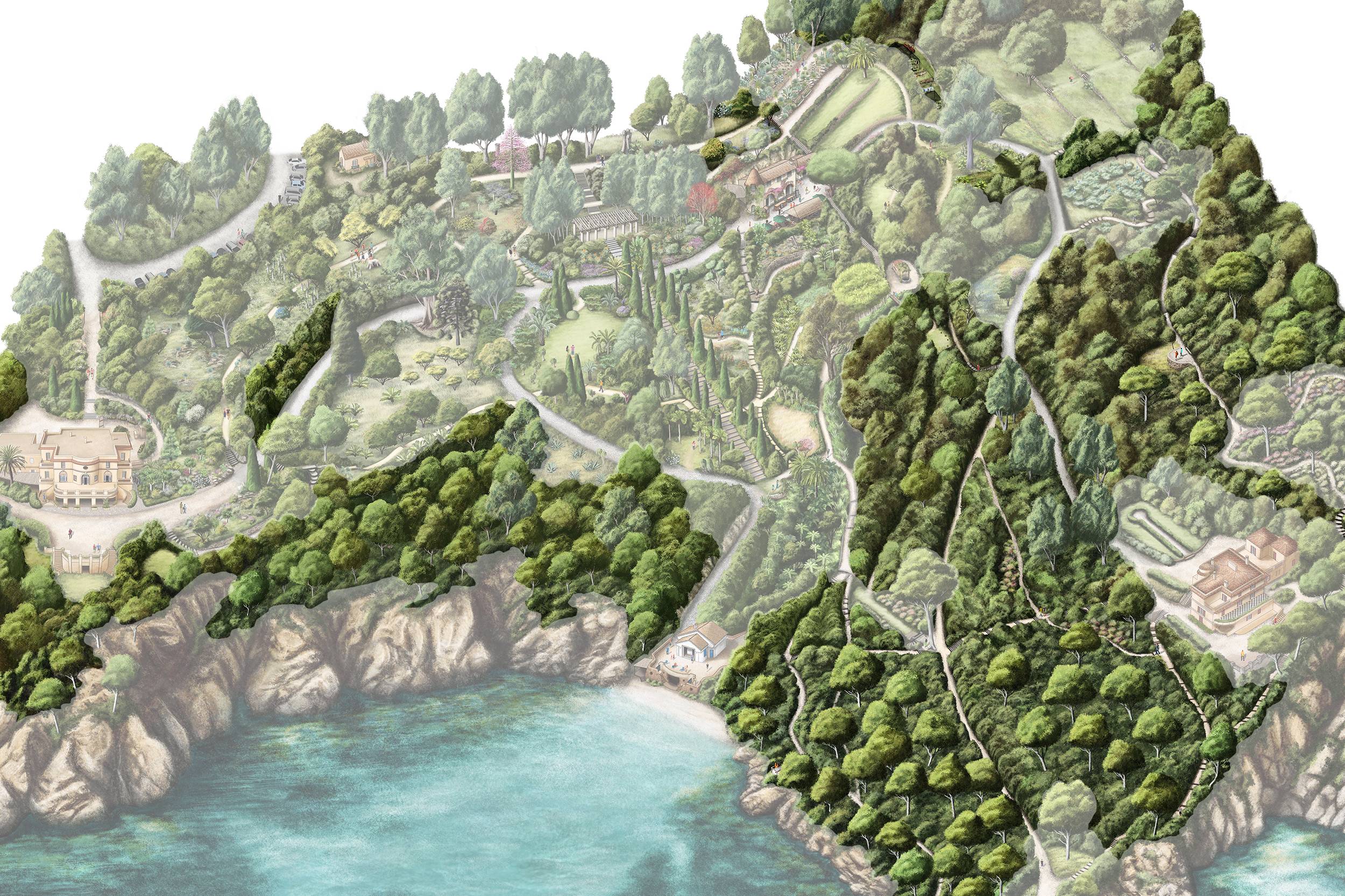The maquis is a type of vegetation that grows on acidic soils, either in siliceous soil like that which is found here in the Maures, or in volcanic soil like that of the Massif de l’Esterel. This type of vegetation is found all around the Mediterranean, in Corsica, Turkey, Cyprus, Libyan Cyrenaica, Morocco, etc.
Characteristic vegetation
The vegetation consists of mainly evergreen plants which are resistant to drought and adapted to the periodic passage of fire and grazing by herbivores.
The mild winters allow for growth in autumn and spring, the best times of the year to observe flowering. The small leaves are tough, thorny or downy, and often aromatic. As soon as it gets hot, they release a pleasant fragrance of essential oils and resins.
The capacity to adapt to fire
The capacity to adapt to fire is an essential characteristic of the maquis. It has been acquired since the end of the Tertiary period, 2.6 million years ago and can be found in the four other Mediterranean climates of the world, particularly in the South African Fynbos and the Australian Mallee.
There is no climax here – it’s a dynamic equilibrium in which the passage of fire and the cycles of drought intervene. This disturbed 20th century foresters, who erroneously believed the maquis to be degraded vegetation from a mythical ‘primary’ holm oak forest. A maquis more than a century old is not in a state of equilibrium moving towards a climax. On the contrary, it is unstable and has become vulnerable to drought – it awaits fire…
Plants of the maquis
03. The maquis with Lavandula stoechas
The plants most typically found here are the holm oak, the cork oak widely used by humans, the Aleppo pine, the maritime pine, the arbutus, tree heather, Calicotome spinosa, Mastic trees, Phillyrea angustifolia, myrtle, rosemary, Lavandula stoechas, sage-leaved and Montpellier rock roses and sarsaparilla.














